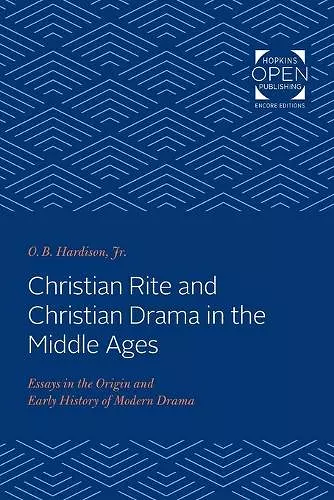Christian Rite and Christian Drama in the Middle Ages
Essays in the Origin and Early History of Modern Drama
Format:Paperback
Publisher:Johns Hopkins University Press
Published:14th Jan '20
Currently unavailable, and unfortunately no date known when it will be back

Originally published in 1965. The European dramatic tradition rests on a group of religious dramas that appeared between the tenth and twelfth centuries. These dramas, of interest in themselves, are also important for the light they shed on three historical and critical problems: the relation of drama to ritual, the nature of dramatic form, and the development of representational techniques. Hardison's approach is based on the history of the Christian liturgy, on critical theories concerning the kinship of ritual and drama, and on close analysis of the chronology and content of the texts themselves. Beginning with liturgical commentaries of the ninth century, Hardison shows that writers of the period consciously interpreted the Mass and cycle of the church year in dramatic terms. By reconstructing the services themselves, he shows that they had an emphatic dramatic structure that reached its climax with the celebration of the Resurrection. Turning to the history of the Latin Resurrection play, Hardison suggests that the famous Quem quaeritis—the earliest of all medieval dramas—is best understood in relation to the baptismal rites of the Easter Vigil service. He sets forth a theory of the original form and function of the play based on the content of the earliest manuscripts as well as on vestigial ceremonial elements that survive in the later ones.
Three texts from the eleventh and twelfth centuries are analyzed with emphasis on the change from ritual to representational modes. Hardison discusses why the form inherited from ritual remained unchanged, while the technique became increasingly representational. In studying the earliest vernacular dramas, Hardison examines the use of nonritual materials as sources of dramatic form, the influence of representational concepts of space and time on staging, and the development of nonceremonial techniques for composition of dialogue. The sudden appearance of these elements in vernacular drama suggests the existence of a hitherto unsuspected vernacular tradition considerably older than the earliest surviving vernacular plays.
ISBN: 9781421430461
Dimensions: unknown
Weight: 476g
349 pages